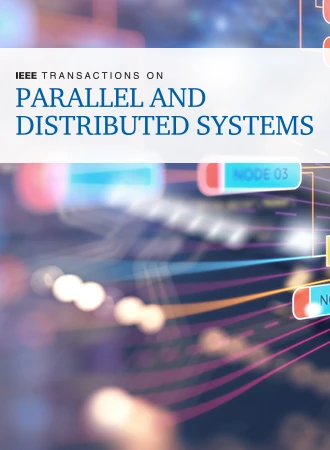重新审视基于 PM 的 B$^{+}$ 树与持久 CPU 高速缓存
IF 5.6
2区 计算机科学
Q1 COMPUTER SCIENCE, THEORY & METHODS
IEEE Transactions on Parallel and Distributed Systems
Pub Date : 2024-03-05
DOI:10.1109/TPDS.2024.3372621
引用次数: 0
摘要
持久内存(PM)具有接近 DRAM 的性能和数据持久性。最近,一种名为 eADR 的新功能可用于配备 PM 的平台,以保证 CPU 高速缓存的持久性。eADR 的出现为构建无锁数据结构和释放 PM 的全部潜力提供了独特的机会。在本文中,我们提出了一种无锁的 PM友好型 B$^+$ 树--NBTree,以提供高可扩展性和低 PM 开销。据我们所知,NBTree 是第一个为带有持久 CPU 缓存的 PM 系统设计的持久索引。为了实现无锁,NBTree 使用原子基元来序列化索引操作。此外,NBTree 还提出了五种新技术来实现结构修改操作(SMO)期间的无锁访问,包括三相 SMO、写同步、读同步、合作 SMO 和移位感知搜索。为减少 PM 访问开销,NBTree 采用了解耦叶节点设计,以吸收 DRAM 中的元数据访问。此外,NBTree 还设计了一个高速缓存持久分配器,并采用日志结构插入和就地更新/删除来增强写操作的访问本地性,从而在持久 CPU 高速缓存中吸收了大量的 PM 写入。我们的评估结果表明,在 YCSB 工作负载下,NBTree 比最先进的持久性 B$^+$-Trees 高出 11 倍的吞吐量,比 99% 的尾部延迟低 43 倍。本文章由计算机程序翻译,如有差异,请以英文原文为准。
Revisiting PM-Based B$^{+}$+-Tree With Persistent CPU Cache
Persistent memory (PM) promises near-DRAM performance as well as data persistence. Recently, a new feature called eADR is available for PM-equipped platforms to guarantee the persistence of CPU cache. The emergence of eADR presents unique opportunities to build lock-free data structures and unleash the full potential of PM. In this paper, we propose NBTree, a lock-free PM-friendly B
$^+$ $^+$
求助全文
通过发布文献求助,成功后即可免费获取论文全文。
去求助
来源期刊

IEEE Transactions on Parallel and Distributed Systems
工程技术-工程:电子与电气
CiteScore
11.00
自引率
9.40%
发文量
281
审稿时长
5.6 months
期刊介绍:
IEEE Transactions on Parallel and Distributed Systems (TPDS) is published monthly. It publishes a range of papers, comments on previously published papers, and survey articles that deal with the parallel and distributed systems research areas of current importance to our readers. Particular areas of interest include, but are not limited to:
a) Parallel and distributed algorithms, focusing on topics such as: models of computation; numerical, combinatorial, and data-intensive parallel algorithms, scalability of algorithms and data structures for parallel and distributed systems, communication and synchronization protocols, network algorithms, scheduling, and load balancing.
b) Applications of parallel and distributed computing, including computational and data-enabled science and engineering, big data applications, parallel crowd sourcing, large-scale social network analysis, management of big data, cloud and grid computing, scientific and biomedical applications, mobile computing, and cyber-physical systems.
c) Parallel and distributed architectures, including architectures for instruction-level and thread-level parallelism; design, analysis, implementation, fault resilience and performance measurements of multiple-processor systems; multicore processors, heterogeneous many-core systems; petascale and exascale systems designs; novel big data architectures; special purpose architectures, including graphics processors, signal processors, network processors, media accelerators, and other special purpose processors and accelerators; impact of technology on architecture; network and interconnect architectures; parallel I/O and storage systems; architecture of the memory hierarchy; power-efficient and green computing architectures; dependable architectures; and performance modeling and evaluation.
d) Parallel and distributed software, including parallel and multicore programming languages and compilers, runtime systems, operating systems, Internet computing and web services, resource management including green computing, middleware for grids, clouds, and data centers, libraries, performance modeling and evaluation, parallel programming paradigms, and programming environments and tools.
 求助内容:
求助内容: 应助结果提醒方式:
应助结果提醒方式:


